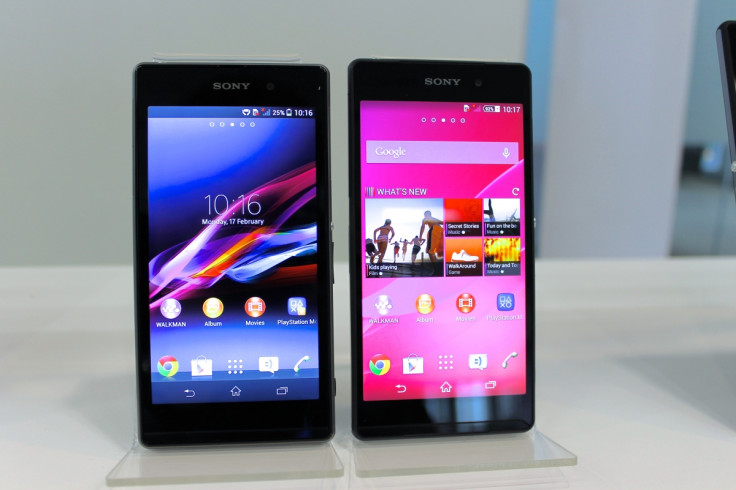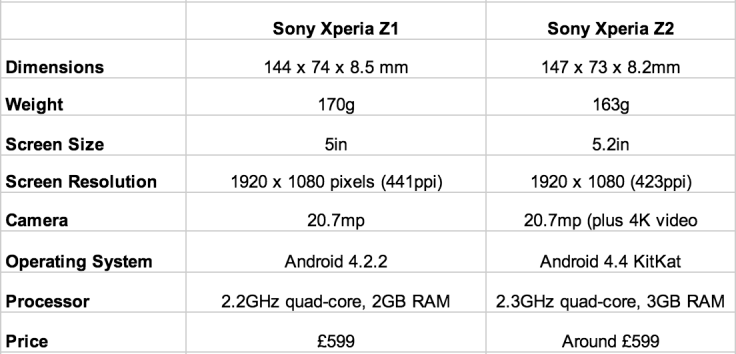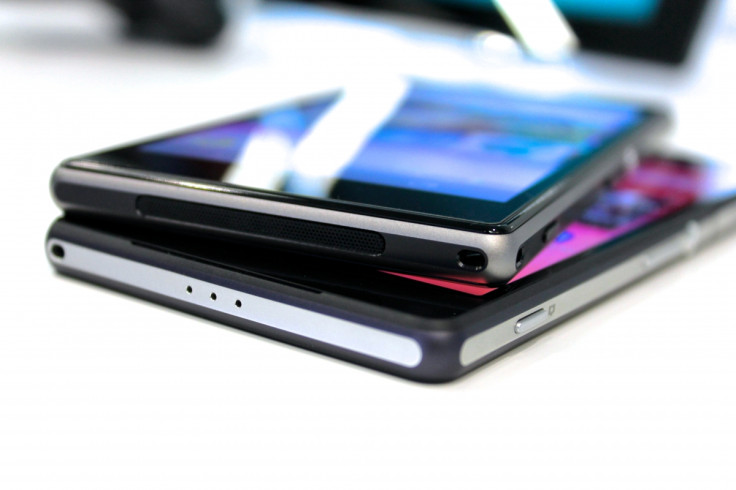Sony Xperia Z2 vs Xperia Z1: Should I Upgrade?

Less than six months after the Xperia Z1, Sony has announced a new flagship smartphone - the Xperia Z2, which was revealed at the Mobile World Congress trade show in Barcelona.
Buyers of the Z1 just a few months ago might feel shortchanged, finding themselves no longer owning Sony's number one smartphone - but is the Z2 worth upgrading to, or should consumers stick with their Z1?
Hardware
For the Xperia Z2, Sony has made a number of small but important changes to how the phone looks and feels. The Z2 is lighter and thinner than its predecessor despite having a larger screen, and retains the original phone's waterproof and dustproof credentials.

The Z2's 5.2in screen is 0.2in larger than that of the Z1, and while this increase is hardly noticeable, the phone's reduced bulk is. Although an excellent phone, I criticised the Z1 for being larger than it needed to be, with wasted space above and below the screen, and a bulkiness than the device could have done without.
Adding a taller screen to almost the same footprint makes the Z2 appear sleeker and more slender than the Z1 - more than the mere millimeters of difference would have you believe.
The Z2 is 8.2mm thick, 0.3mm less than the Z1; this may not sound like much, but it is apparent when you hold both phones together; overall, the Z2 feels more comfortable to hold in one hand and is lighter at 163g compared to 170g.
The Z2 keeps the same single piece of aluminium forming the phone's frame, along with glass covering the front and back. Sony's colour options also remain the same - black, white and purple.
Being waterproof, the Z2 shares the same removable flaps as the Z1, covering the phone's micro USB charging port, microSD card slot, and the SIM card slot; as before, the headphone jack is treated to a special coating making it waterproof without the need for a cover.
Finally, the Z2 gets stereo speakers for improved sound while watching video. As with the HTC One, the Z2 has a speaker at the left and right edges of the screen (when viewed in landscape).
Camera
Sony has given the Z2 the same 20.7-megapixel rear camera as the Z1, and while that sounds good on paper, the Z1's photography performance was something of a letdown. The phone performed excellently outdoors, but indoor shots suffered from grainy, noisy results due to overly aggressive post-processing done automatically by the phone after taking each shot.
Hopefully Sony has overcome these software gremlins with the Z2, because the focus this time around is on video. Anticipating the future popularity of 4K - or Ultra HD - televisions, Sony has given the Z2 4K video shooting, an improvement over the Z1's 1080p Full HD capability.
Recognising very few people actually own Ultra HD televisions, Sony claims the Z2's 4K shooting ability is a way of "future proofing your memories," knowing they'll take full advantage of televisions of the future.

In the meantime, 4K footage shot on the Z2 can be viewed in HD on the phone, or in HD on a connected television, where the video can be zoomed in on (by pitching the phone's screen), while retaining a high quality.
Sony has added new software features for the Z2, including slow-motion video recording at 120 frames per second - although the image quality drops to 720p HD when the feature is used. The company has said slow-motion video will be added to the Z1, Z1 Compact and Z1 Ultra through a software update later in the year.
The Z2's 2.2-megapixel front-facing camera has been improved slightly from the 2 megapixel sensor on the Z1.
Performance
The Xperia Z2 is powered by a 2.3GHz, quad-core processor with 3GB of RAM, which is a minor increase from the 2.2GHz chip with 2GB of RAM used in last year's Z1. However, more than a slightly faster clock speed, the Z2's processor is the new Snapdragon 801, which replaces the 800 as Qualcomm's new mobile flagship.
Both the Z1 and Z2 come with 16GB of internal storage, and both can be upgraded by up to 64GB via their microSD card slots.
Finally, the Z2 gets a slightly larger battery, up from 3,000mAh capacity in the Z1, to 3,200 mAh.
Software
The Xperia Z2 runs Android 4.2.2 KitKat - the same version of Google's operating system as the Z1.
New for the Z2 is noise-cancelling technology for compatible earphones. Where normal noise-cancelling headphones require their own batteries to power the audio processing used to eliminate background noise, the Z2 itself performs this task, allowing Sony to develop a pair of earphones capable of cancelling noise without needing their own batteries.
Bundled with the Z2 (in the UK market), the earphones are also sold separately for around £60, although they will not cancel noise when used with other products; similarly, the Z2 cannot perform noise-cancelling with any earphones other than the ones provided.
Should I upgrade?
The Xperia Z2 is the phone the Z1 should have been. It isn't a major update by any means - and the Z1 wasn't a bad phone - but the Z2 corrects all of its predecessor's small problems, creating a more complete package.
I am yet to try out the Z2's camera enough to see if those post-processing issues have been addressed, and on first inspection it wasn't obvious if the screen has been made brighter - a complaint I had with the Z1.
Because no Z1 buyer will be nearing the end of their contract, upgrading to the Z2 would only be recommended for the diehard Sony fan with deep pockets.
Looking to the rest of 2014, Sony says we are also to expect Z2 versions of the Compact and Ultra.
© Copyright IBTimes 2025. All rights reserved.






















